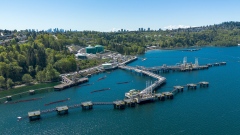Jun 24, 2024
Immigration to drive Canada's population boom over next 50 years
, Bloomberg News
One way to invest in Canada's population growth is through real estate: portfolio manager
Immigration-fuelled population growth is set to increase the number of people in Canada by more than half over the next 50 years.
The country’s population is expected to increase 57 per cent to 62.8 million by 2073, up from 40.1 million last year, according to forecasts released Monday by Statistics Canada. That translates to an average annual growth rate of about 0.9 per cent, the agency’s “medium-growth” scenario shows.
The agency also included low and high growth projections, with population estimates ranging from 47.1 million to 87.2 million. The average annual rate would range between 0.3 per cent to 1.6 per cent in those scenarios, compared with an average of 1.1 per cent over the past three decades.
In the main scenario, Canada’s natural population growth — births minus deaths — will turn negative by 2036, making immigration the sole driver of future population increases.
Temporary residents
An influx of non-permanent residents, including foreign students and temporary workers, has underpinned the recent boom of Canada’s population. However, Statistics Canada sees steep outflows of these newcomers from now through 2027.

Faced with strained infrastructure and services, housing shortages and soaring rents, Prime Minister Justin Trudeau aims to reduce the number of temporary residents by about 20 per cent over the next three years.
Currently, there are about 2.8 million temporary residents in the country — about 830,000 more than last year.
The net outflow of non-permanent residents will temporarily slow annual population growth to 0.7 per cent between 2024-2025 and 2026-2027 versus 3.2 per cent last year, the agency said in its medium-growth scenario.






